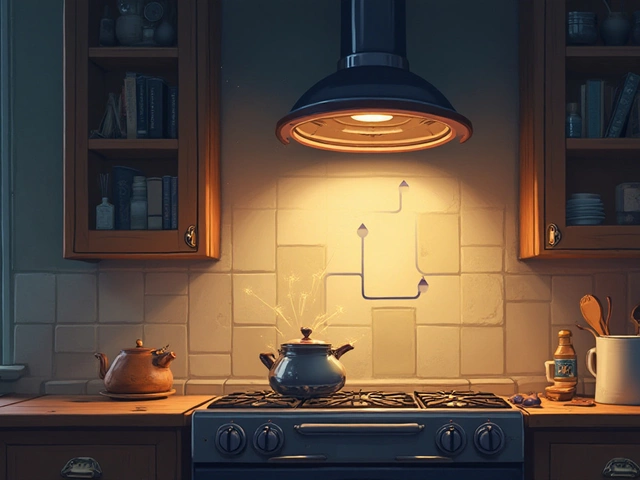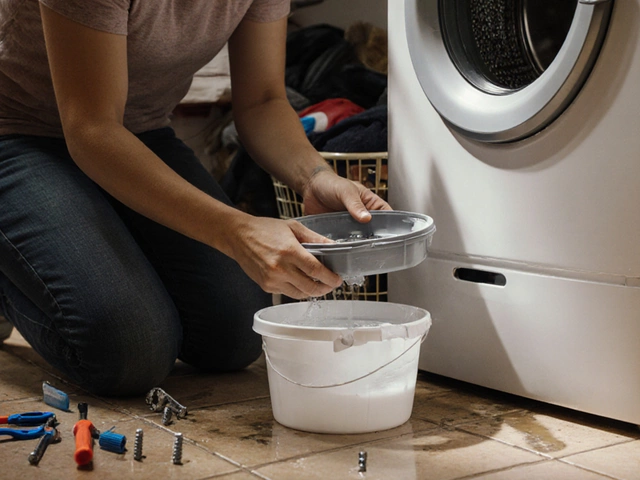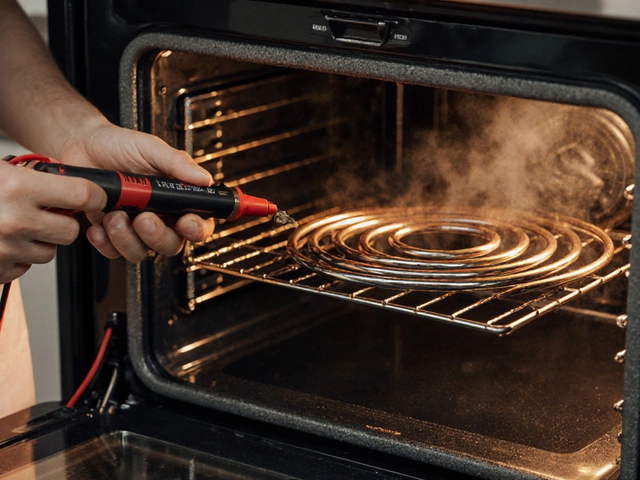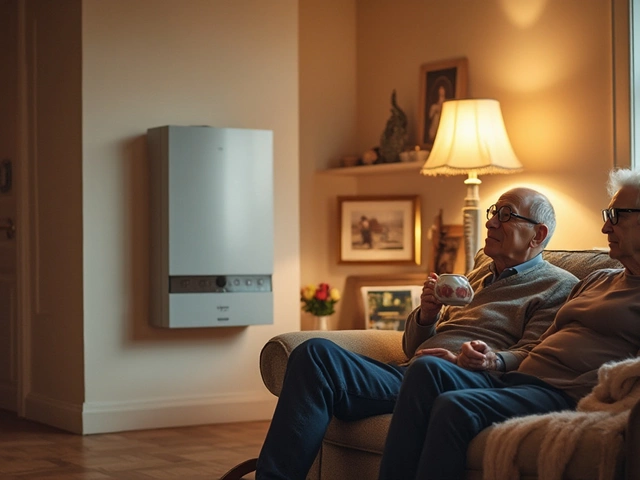Having a water heater that works flawlessly is something we often take for granted until there’s an unexpected cold shower. If you've ever wondered how to tackle water heater hiccups, understanding the reset button is a great starting point. This article dives into all the essential know-how about resetting your water heater, aiming to get your appliance back up and running seamlessly.
Water heaters are reliable companions in our homes, but like any appliance, they sometimes need a little nudge. The reset button is usually red and can be found on the thermostat of your electric water heater. Before engaging that button, it’s crucial to know why it tripped in the first place and how to handle it with care. Sticking with us, you’ll gain insights not just on the 'how', but the 'why' and 'when' too.
- Understanding the Reset Button
- Signs your Water Heater Needs a Reset
- Step-by-Step Guide to Resetting
- Safety Tips During the Procedure
- Troubleshooting Common Issues
- When to Call a Professional
Understanding the Reset Button
The reset button, sometimes known as the high-limit switch, is a component on your water heater designed to keep you safe from overheating issues. By design, it's a safety feature that shuts off power to the heater when the water temperature reaches unsafe levels. This button is usually red and located on the thermostat of your electric water heater, making it easily accessible for resetting the system when necessary. Most homeowners might overlook this seemingly simple component, but it's an integral part of ensuring your home appliance runs smoothly and safely. When the reset button is triggered, it usually indicates a thermostat problem, or it might mean the heater needs to be adjusted to a more suitable temperature setting.
The mechanics behind the reset button are tied to the water heater's internal circuits. If the heater becomes too hot, the high-limit switch will trip, cutting off power to prevent the risk of a burn hazard or potential damage to the unit. It's akin to your circuit breaker in design and function, halting operation to address potential issues. According to the American Society of Home Inspectors, the high-limit switch triggers when water temperature exceeds 180 degrees Fahrenheit, a critical threshold that must not be overlooked to prevent scalding and equipment malfunction.
Once the button is tripped, you'll need to manually reset it. This is done by pressing the button after addressing the underlying cause of the interruption. It's fascinating how such a small feature can prevent big problems! Often, the underlying issue might be a malfunctioning thermostat or a defective heating element needing inspection or replacement. As per experts from the International Association of Certified Home Inspectors, frequent tripping of the reset button could signify potential electrical problems or require attention to the appliance's age and condition.
Understanding and knowing when to use the high-limit switch is critical for water heater repair. While resetting might seem like a straightforward task, it is essential to understand the intricacies to prevent recurring issues. Remember, if the root cause isn't identified and resolved, the reset button won't be able to save the day for long. From my personal experiences, these glitches might feel like mere annoyances at times. But tackling them head-on ensures you enjoy warm showers uninterrupted, a comfort not to be sacrificed lightly! If you're finding this a recurrent task, why not explore investing in better-insulated models that tend to overheat less frequently?
"A properly maintained water heater can last a decade or more. Regular inspections and a mindful approach to its components, like the reset button, play a big part in that longevity," shared Energy Star, an esteemed energy efficiency program from the U.S. Environmental Protection Agency.
One last morsel of wisdom to take away? Moderation is key, and that applies to temperature settings too. For most families, a setting around 120-140 degrees Fahrenheit strikes the right balance between safety and comfort, while also playing an integral part in minimizing tripping incidents. A useful reminder to keep your water heater happy and your household warm!
Signs Your Water Heater Needs a Reset
In the world of household appliances, the water heater stands as one of the unsung heroes, tirelessly delivering hot water to our taps and showers. Yet, there are times when this steadfast appliance encounters issues, and a reset might be just the remedy it needs. It's crucial to recognize when it's time to opt for a reset, and understanding these signs can save you from unnecessary discomfort or damage. One primary indicator is an abrupt halt in hot water production. If you notice only cold water coming out of your faucet despite consistent demand, this may be your first clue. The reset button typically trips when the system senses a fault, such as overheating or a power surge, causing an internal switch to shut down for safety.
Strikingly, another telltale sign is fluctuating water temperatures. If you've set your heater to a specific setting but find that your water is either scalding or merely lukewarm, there might be an issue with the thermostat. This inconsistency often prompts the reset mechanism to engage as a precaution. Such temperature anomalies can be sparked by thermostat malfunctions or electrical hiccups, each signifying the need for a reset.
"A water heater's reset button acts as a crucial safety mechanism, shutting off the system when detecting potentially dangerous conditions," says Mike Stone, a veteran plumbing expert with over thirty years of experience.
A water heater might also signal the requirement for a reset through strange sounds emanating from the unit. Clinking, clunking, or even popping noises often suggest sediment build-up at the bottom of the tank. These sediments cause the water heater to overwork, tripping the reset button as a defensive move. Such sounds should not be ignored as they indicate underlying problems that could escalate if not addressed promptly.
Electrical tripping is also a common sign. If your circuit breaker trips whenever the water heater is on, it's high time to consider a reset alongside a thorough inspection. Repeated tripping not only highlights the need for a reset but also signals possible wiring or element faults. Regular maintenance can preempt these issues, yet a timely reset in response to these signs is often the first step in troubleshooting.
Interestingly, for those keen on stats and reliable sources, a study by the National Renewable Energy Laboratory reveals that nearly 18% of residential electricity use can be attributed to water heating. This goes to show the importance of maintaining an efficiently running water heater. Periodic resets aren't just quick fixes; they play a pivotal role in keeping energy consumption in check and ensuring the heater runs optimally.
Lastly, visible leakages around your water heater point to pressures that may have engaged the reset mechanism. A reset can temporarily recalibrate the system, but the presence of leaks should prompt immediate maintenance checks to avoid potential flooding or extensive water damage.

Step-by-Step Guide to Resetting
When your water heater stops providing the comforting warmth you expect, it might be time to reset. But before diving into the process, it’s essential to ensure your safety and understand each step thoroughly. Resetting the button is often the first troubleshooting step due to its simplicity and effectiveness. It’s a solution that requires patience and a straightforward approach. There's no need to be a part-time plumber on weekends when you can master the art of the reset.
Firstly, make sure the situation is safe. Water and electricity are not the best of friends, so the power source needs your immediate attention. Power off your circuit breaker to ensure zero electricity flow. It's easy to overlook, but safety is paramount. Once you’ve double-checked that the device is not drawing any power, remove the access panel where the thermostat and the reset button reside. It's a great time to maybe have a flashlight in hand – these spaces can get pretty dim at times!
Next comes the most tactile part of the process: the reset itself. You’ll recognize the reset button by its splash of red color on the thermostat. Firmly press it, and you should hear a click that signifies a successful reset. It might seem mundane, but hitting this little button can spell the difference between a freezing morning or a warm, relaxing start to your day. It can be quite satisfying to feel like you've conquered a small household beast. This might be routine for some, but achieving effective water heater repair can feel like a triumph.
"To reset the water heater thermostat, keep in mind that the underlying issue might still exist unless addressed. Regular maintenance ensures long-lasting performance," says John Maton, a seasoned home repair expert.
Once you've completed this step, replace the access panel and restore the power through the circuit breaker. Symptoms of previous malfunction should begin disappearing, but patience is key. It usually takes a bit of time for the tank to heat up and elements to stabilize. Remember to keep observing for any irregular patterns or odd sounds as things settle back in place, as these might signal that a deeper issue still lurks. However, if water temperature issues persist or trip-offs recur frequently, it might be time to consider professional help.
Here's a visual roundup of the procedure:
- Turn off the power at the circuit breaker.
- Remove the water heater's access panel.
- Press the red reset button on the thermostat.
- Replace the access panel and restore power.
- Monitor for proper heating and irregularities.
Remember, tackling these resets with care ensures that you not only solve the problem but also extend the appliance's lifespan. Many people are surprised to learn what a simple reset can achieve, often putting off what might seem like a burdensome task. Keeping a watchful eye on your water heater can save you unexpected troubles and provide uninterrupted warmth, turning what seems technical into a flawless DIY moment at home.
Safety Tips During the Procedure
When it comes to tinkering with your beloved water heater, the first rule of thumb is safety. Ensuring you’re safe during a maintenance task like resetting your heater isn’t just a wise choice—it’s essential. A reset might sound simple, but you’re dealing with electrical components and water, a combination that demands respect and care. The reset button on your electric water heater is a safeguard against overheating, so understanding its function and limitations helps you maintain a secure environment. Before you begin, always cut the power by shutting off the circuit breaker. Water heaters are often hardwired directly into the home's electrical system, so even a momentary lapse in focus can lead to serious injury.
Disconnecting the electricity isn't only prudent, it's a necessary step. Only when you’re sure the power is off should you proceed to remove the access panel on the heater, typically where you find the thermostat and elements. As you venture into this part of your home maintenance, having the correct tools—a Phillips screwdriver, for instance—prepares you for any challenge that the heater throws at you. Ensure to use proper insulation equipment to prevent any chance of electric shock. Keep in mind that even if the heater seems inviting, the reset button itself, usually a small red or yellow disc located near the thermostat, could still be under a bit of latent charge.
Our canine and curious companions, like Max the dog in my case, should be kept at a distance. Not only to prevent them from harm but to ensure you can focus solely on the task at hand. It's easy to get distracted if you have little ones or pets hovering nearby. The space around your water heater should be clear, and the area well-lit, to avoid any tripping or slipping hazards. Lighting is surprisingly a big deal; poor illumination can easily turn an afternoon of maintenance into a cold evening shower for all the wrong reasons.
"Never attempt any electrical repair or maintenance without completely understanding the potential risks and proper protocol," warns the Electrical Safety Foundation International, 2023.
If upon resetting, the thermostat makes any odd noises or feels unusually warm, pause and reassess. Continuing to mess with a malfunctioning unit might push the issue from a mere inconvenience to a severe problem. Remember, if the reset button keeps tripping, it is signaling deeper issues like faulty wiring or a malfunctioning thermostat. Regular maintenance is crucial; not only does it extend the life of your appliance, but it also keeps you safe.
Here is an illustrative point on why organization matters—a small checklist can often be what separates success from calamity when working with such electrical devices. Perhaps your reset doesn’t take hold and the water heater's woes continue. In such a case, don’t hesitate to seek out professional services from a certified technician. They have the expertise and tools to diagnose problems accurately, ensuring your water heater repair is executed with precision and safety.
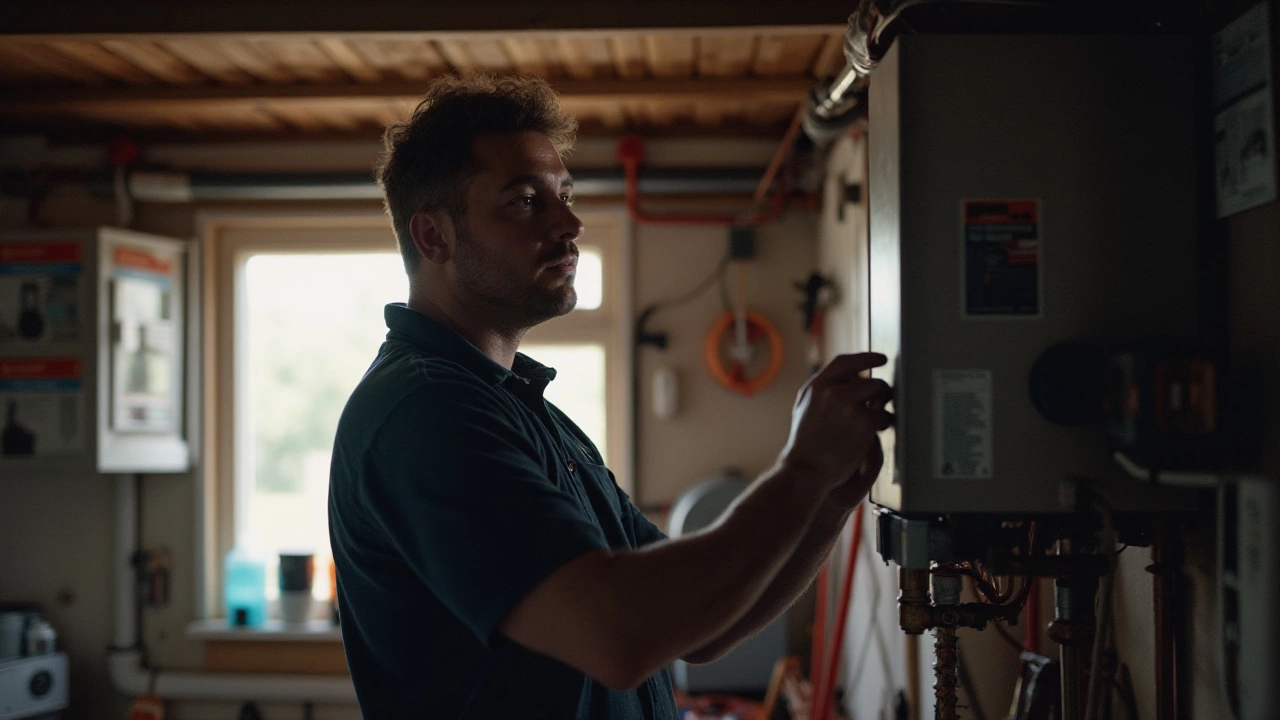
Troubleshooting Common Issues
When your water heater decides to throw a tantrum, it’s often due to a few common culprits that can be resolved with a bit of detective work. For starters, one of the reasons the reset button might trip is the unit overheating due to a faulty thermostat. The thermostat's job is to regulate the temperature and ensure consistent hot water. When it starts wearing out, it can cause the water to get too hot, leading to the reset. Checking if your thermostat is functioning accurately can save you time and prevent unnecessary resets.
Another frequent issue is sediment build-up in the tank. This is a sneaky one because while it silently accumulates, it can cause the heating elements to overwork, reducing efficiency and potentially triggering the reset feature. Regular maintenance, such as flushing the tank once or twice a year, can greatly increase the lifespan of your water heater and significantly decrease the chances of sediment causing havoc.
Electric water heaters depend on consistent and stable electrical connections to function well. Sometimes, the root of the problem could be something as simple as a loose connection or a circuit breaker issue. Make sure all connections are tight, and the circuit breaker is in good working order. This can prevent power disruptions that might lead to the reset button being triggered unnecessarily. If you have a multimeter on hand, verifying the voltage at the unit can ensure you're getting enough power, contributing to consistent performance.
"Many homeowners underestimate the importance of regular water heater maintenance. A few small steps can prevent large bills," says Edward Stone, a senior technician at Home Appliance Co.
One more potential problem is if the water pressure goes beyond the acceptable range. Excessively high water pressure can stress the system, sometimes forcing the reset button. You might also want to examine the pressure relief valve to ensure that it's working adequately. Too much stress on the heater can lead to serious problems, so it's often helpful to have a pressure gauge installed for regular monitoring.
For those who appreciate some data-driven insight, here is a simple table highlighting the most reported issues and their potential frequency:
| Issue | Frequency (%) |
|---|---|
| Faulty Thermostat | 35% |
| Sediment Build-Up | 30% |
| Electrical Issues | 25% |
| High Water Pressure | 10% |
If you’ve gone through these common issues and your water heater still isn't performing up to snuff, it could be time to call in the professionals. Sometimes, the inner workings might need a seasoned touch to get back to life. Before doing so, documenting what you’ve checked can assist them in diagnosing and resolving the issue as quickly as possible.
When to Call a Professional
There comes a time when your trusty water heater insists on being a puzzle rather than a straightforward appliance. Remember how many hats you wear – the resident cook, the dog owner, the writer – but unless you’re also a professional plumber, some situations demand a trained hand. When should you make that call? It's rational assurance rather than surrendering to the unknown. Consider a recurring tripping of the reset button. If you're finding yourself visiting the circuit breaker or reset button more often than your mailbox, it speaks volumes about an underlying issue. It’s akin to Max, my playful dog, barking unusually. You know something’s off.
Other decisions hinge on unusual behavior. An inadequate supply of hot water, or none at all, can point to more than just a minor glitch. There are hefty components within the water heater like thermostats or heating elements begging for a precise touch. Even muddy or rusty water emerging from your faucets whispers the necessity of professional involvement. These issues are typically beyond a quick button press and more about battling deeper physical or internal plumbing problems.
A prominent emotional signal is your safety. If there are signs of leaks or moisture build-up around your unit, it becomes an immediate concern. Foster that spirit of prioritizing your wellbeing. Water and electricity collaborate dangerously if mishandled, and escaping disasters before they hatch serious concerns reflects on foresight. A leaking water heater is no good neighbor.
Moreover, chronic problems after resetting might highlight faulty electrical components or require intricate diagnostics. Trust is your ally, and allowing someone skilled to inspect guarantees peace of mind. In terms of cost and efficiency, professionals not only address present issues but can flag potential ones, steering you clear from dire futures.
Now, here’s a nugget of advice from industry specialists. As the United States Department of Energy notes, "Upgrading an old water heater can save a family hundreds in utility bills annually."
Having an expert analyze your water heater could shed light on opportunities to enhance energy efficiency or save on bills.With our lives tuned to schedules, know when to outsource complex tasks to return focus on nurturing creativity and handling delightful responsibilities, like enjoying time with Max.

